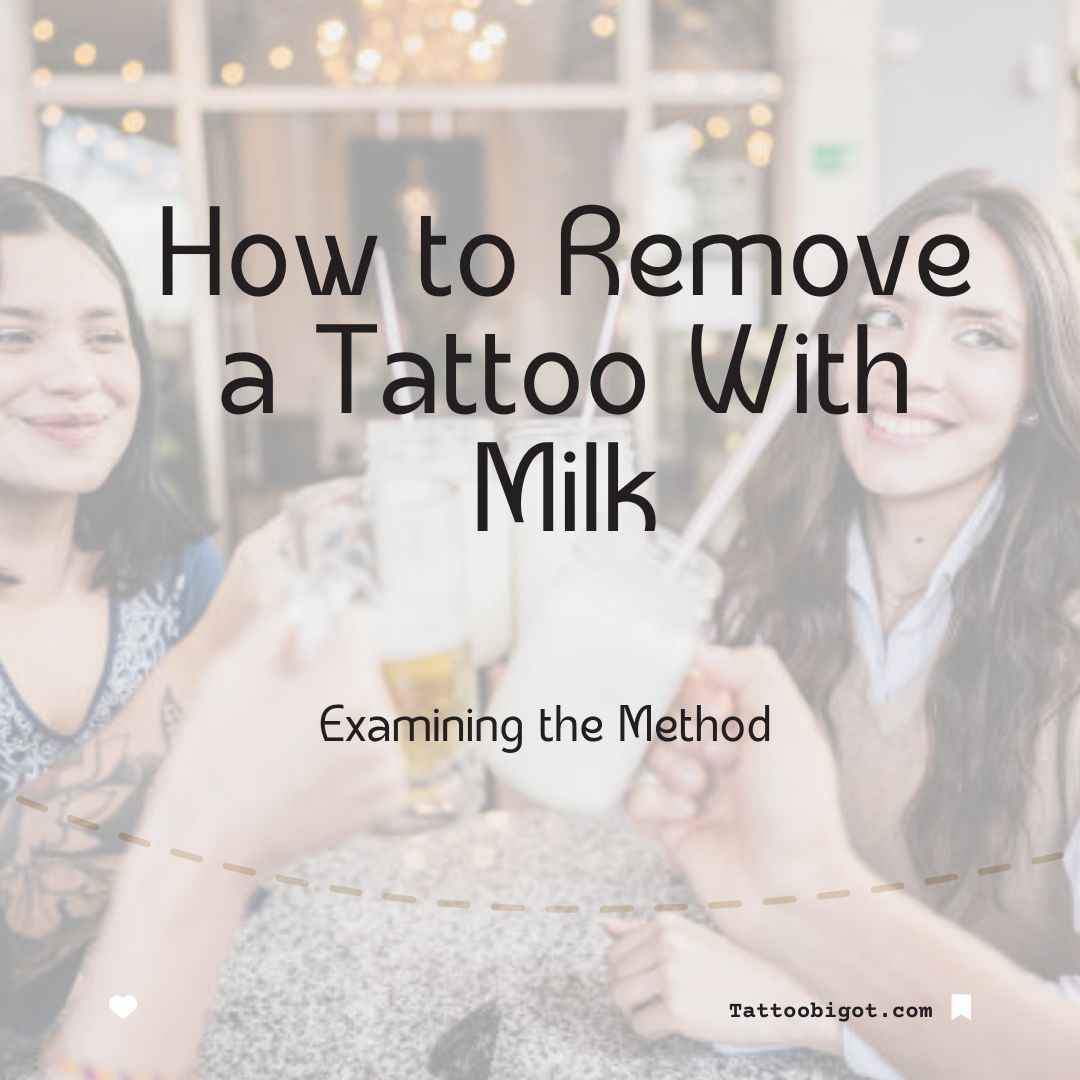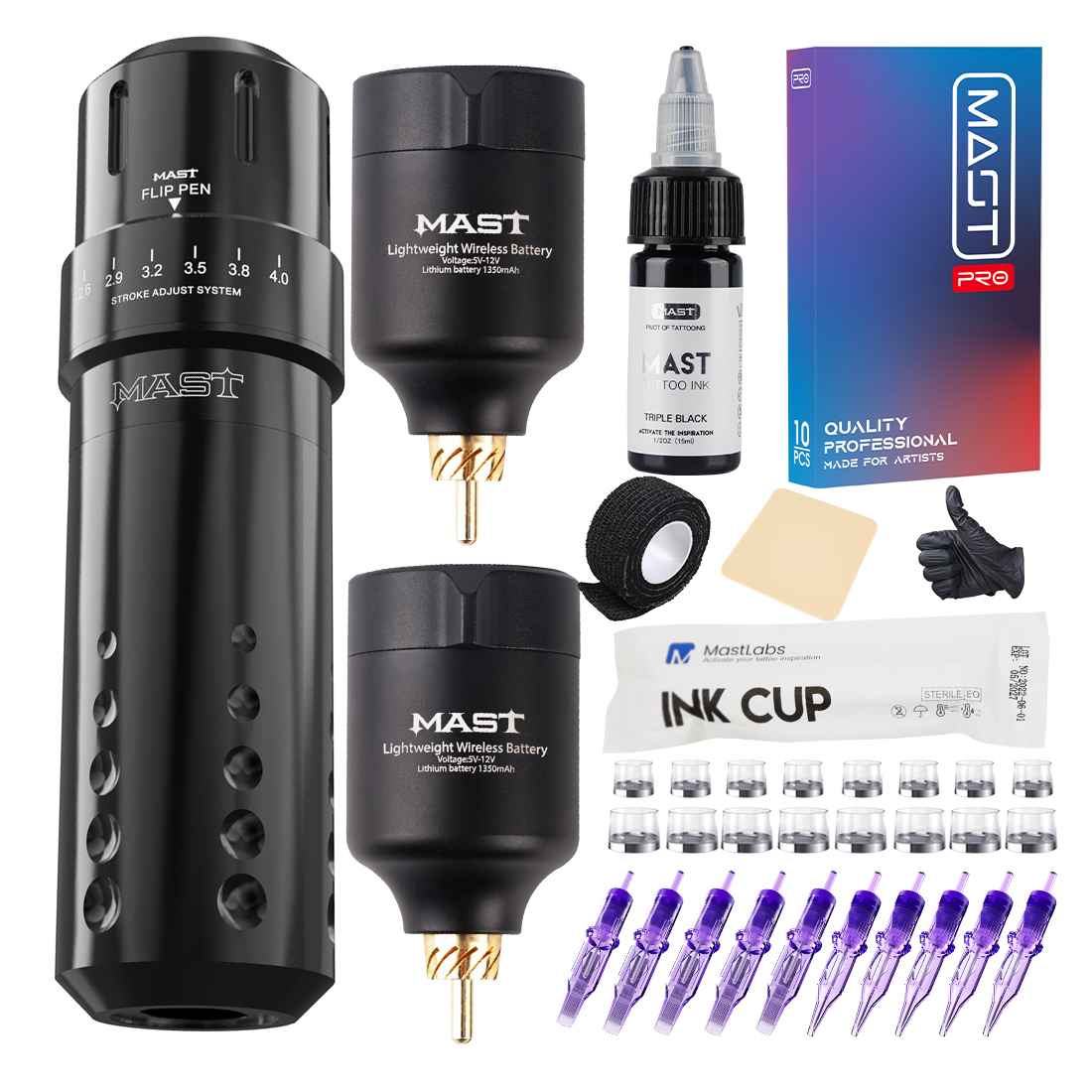You may have heard suggestions to use milk for DIY tattoo removal. But can dairy really erase permanent ink? Yes or no. Even if yes, the next big task would be to know how to remove a tattoo with milk.
This article takes an objective look at the notion of using milk to remove tattoos. We’ll explore the origins of this folklore remedy, the purported mechanism behind it, risks and concerns with attempting it, and professional views on milk’s efficacy and safety for tattoo removal.
Read on to learn if and how milk could potentially lighten small tattoos when proper removal isn’t immediately feasible. As always, consult a dermatologist before attempting any home remedies.
Background on the Milk and Tattoo Removal Folklore
Using milk to remove or fade unwanted tattoos is a classic old wives’ tale and home remedy passed down for generations.
Proponents of the milk tattoo removal method cite a few explanations for how milk supposedly works:
– Lactic Acid Content – The alpha hydroxy acids in milk may lightly exfoliate and peel skin, lifting some ink.
– Fat Content – Fats like whey protein could theoretically pull some pigments out.
– Enzyme Content – Enzymes like catalase may aid gentle fading over time.
There are many accounts online of people claiming milk worked for them to fully erase small tattoos. But these reports tend to be anecdotal without before and after documentation or accountability for factors like tattoo age and sun exposure.
Also Read: Can You Remove Red Tattoo Ink? A Complete Guide
Examining How Milk Could Potentially Lighten Tattoos
While milk is not proven to completely remove tattoos, some components could theoretically offer mild fading:
– Lactic Acid: This AHA may lightly exfoliate and peel away very superficial layers of skin, taking traces of ink with it.
– Whey Protein: When milk fat digests down, these proteins may attract and absorb some pigment particles.
– Catalase: This enzyme present in raw milk may aid gradual breakdown of small amounts of ink over time.
Any fading would depend on the depth and type of tattoo ink, with only the most surface-level pigments affected. And even minor lifting would require diligent topical application for many weeks or months.
Also Read: How to Remove Glitter Tattoos at Home: A Complete Guide
Risks and Concerns Using Milk for Tattoo Removal
Before attempting any home tattoo removal methods, the following concerns should be weighed:
– Skin Irritation – Lactic acid may cause redness, stinging, and flaking, especially with at-home overuse.
– Infection Risk – Bacteria introduced into compromised skin can lead to serious local infection or sepsis.
– Scarring – Exfoliating and picking at scabbing can lead to permanent raised, thick scars.
– No Total Removal – Only professional tattoo removal techniques fully eliminate ink particles from the skin.
– Allergic Reaction – Those with milk protein allergies experience severe adverse skin reactions.
– Skin Damage – Excessive acid, abrasion, and irritation inflicts lasting harm on skin integrity.
– Ingredient Variability – Unpredictable results using unstandardized sources of milk.
At best, milk may offer very subtle improvement over time. But the risks appear to outweigh any potential small benefits for tattoo removal.
Also Read: Does Tattoo Ink Stain Clothes? A Comprehensive Guide
Medical Professional Opinions on Milk and Tattoo Removal
Overall, dermatologists and tattoo removal experts do not recommend using milk to remove ink:
– “There is no scientific evidence milk can remove tattoos. Any change is likely coincidence.” – Dr. Shasa Hu, Dermatologist
– “Milk lacks the chemical properties needed to break down tattoo pigments.” – Dr. Peter Cruz, Laser Surgeon
– “The ingredients in milk do not penetrate deep enough into skin to reach tattoo ink.” – Dr. Renee Pruitt, Esthetician
– “Any fading seen is likely due to skin exfoliation from milk allergies, not the milk itself.” – Dr. Sapna Palep, Dermatologist
– “Milk provides no advantage for tattoo removal and poses real concerns like infection risk.” – Dr. Troy Case, Cosmetic Surgeon
Overall consensus agrees other methods like laser removal are far safer and more consistently effective for permanent tattoo elimination.
Signs Milk Is Causing Skin Damage
If attempting milk for tattoo removal, stop immediately if the following are observed:
- Redness and Swelling – Signs of irritation and inflammation developing.
- Hot to the Touch – Signals potential infection brewing under the skin.
- Oozing – Leaking fluid indicates deep skin erosion that requires urgent care.
- Increase in Itchiness – Allergic reactions will progressively worsen with repeated milk contact.
- No Improvement – If no change after 6 weeks, further DIY methods will only inflict damage.
- Scabbing – Picking scabs can lead to permanent scarring and ink redeposition.
Seeking medical help for adverse reactions is crucial to prevent permanent repercussions.
Also Read: How to Get Rid of a Lip Tattoo: A Complete Removal Guide
When to Consider Professional Tattoo Removal Instead
Rather than attempting risky DIY removal, consider consulting a dermatologist for medical tattoo removal if:
- The tattoo is larger than 2 inches wide. Professional treatments work best on larger pieces.
- The ink contains any colors other than black. Colored pigments rarely respond to home remedies.
- The tattoo is older than 1 year. Newer tattoos under a year fade more easily than older, settled ink.
- Complete removal is desired. Only laser breaks down ink fully; DIY only lightens minimally for some.
- You have a milk allergy or sensitivity. Adverse reactions will occur.
- The tattoo is along delicate bone structures like hands, feet, or joints.
For many situations, professional medically supervised laser removal is the safest, most effective option.
Also Read: How to Get Tattoo Ink Out of White Clothes: A Complete Step-by-Step Guide
The Takeaway: How to Remove a Tattoo with Milk
In this article, we’ve talked about how to remove a tattoo with milk. Whether it is true or just another popular myth out there.
The truth is that while using milk to remove tattoos has been touted for generations, there is no solid evidence it can fully erase or adequately fade ink.
Mild exfoliation from lactic acid may offer subtle improvement over time in some cases. However, the risks of scarring and infection generally outweigh any benefits for most people. For safe, consistent tattoo removal, non-DIY laser treatments remain the gold standard.
But for those unable to immediately undergo laser removal, applying milk to very new, small tattoos may provide minor lightening as an interim measure. As always, consult your dermatologist before attempting any home remedies.
FAQ About Using Milk for Tattoo Removal
How often should milk be applied to fade a tattoo?
Twice daily application for at least 2-3 months is required to potentially notice any minimal change in tattoo appearance.
Does whole milk work better than skim milk to remove tattoos?
Whole milk has slightly higher fat content which may allow it to extract traces of ink better in theory. But no Grade A milk has proven effective.
Can you use almond milk or soy milk to remove tattoos?
Plant-based milks lack the compounds purported to aid fading like lactic acid and whey protein. They are not recommended.
Does milk remove permanent or temporary tattoos better?
Milk has no effect on temporary tattoos, which wash off easily with water. Slight improvement has only been anecdotally reported for permanent ink.
What kind of scarring can happen from attempting tattoo removal with milk?
Chronic skin irritation and infection can result in raised, thick hypertrophic and keloid scarring.
If milk removes tattoos, why don’t lactating women’s tattoos fade?
The concentration of lactic acid and proteins in breastmilk are far lower than levels needed to exfoliate skin and pull ink particles out.
How soon can results be seen using milk on a tattoo?
Minor lightening would take at least 8 weeks of diligent topical application. Most cases see no noticeable change.






